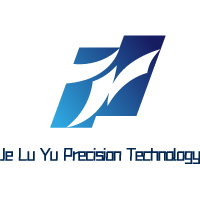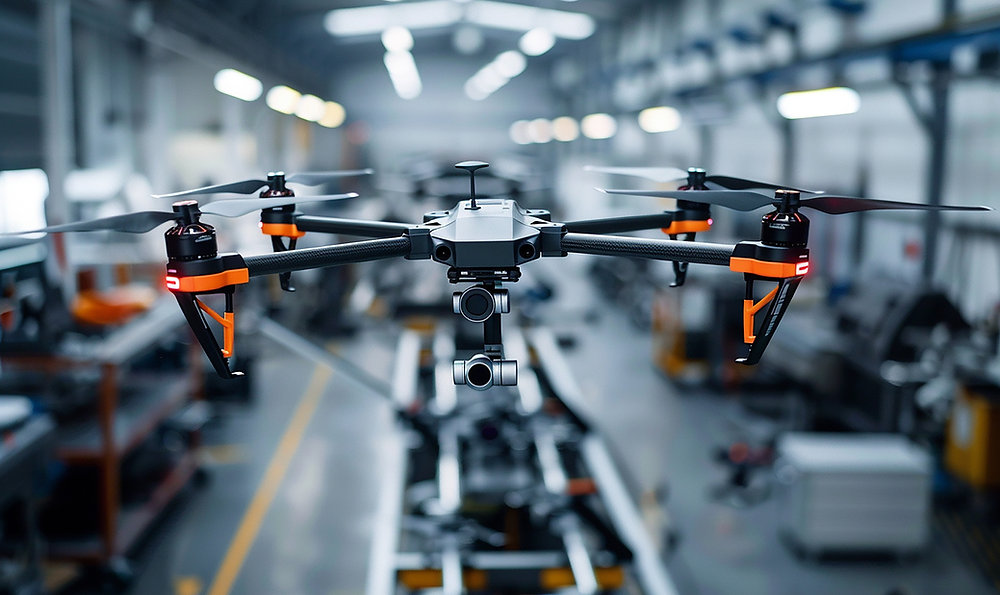Precision in Motion: Advanced Drone Component Manufacturing and Rapid Prototyping Strategies
The drone industry has evolved from hobbyist workshops to a sophisticated sector demanding aerospace-level precision and lightning-fast development cycles. In this competitive landscape, the ability to rapidly iterate designs and manufacture high-performance components reliably separates industry leaders from the rest. At JLYPT CNC Machining, we have mastered the intricate dance between drone component manufacturing and rapid prototyping, providing engineers and manufacturers with the technical foundation to transform innovative concepts into flight-ready reality.
This comprehensive analysis explores the advanced methodologies, engineering considerations, and technical workflows that define modern drone component manufacturing and rapid prototyping. We examine how strategic implementation of CNC technologies, coupled with material science expertise and rigorous validation protocols, enables the creation of drone components that meet exacting performance specifications while dramatically accelerating development timelines.
The Engineering Imperatives of Drone Component Design
Drone components operate under a unique set of constraints that demand exceptional engineering precision. Successful drone component manufacturing and rapid prototyping must address multiple simultaneous challenges:
Weight Optimization and Structural Integrity
The power-to-weight ratio remains the fundamental determinant of drone performance. Our approach to drone component manufacturing and rapid prototyping emphasizes:
-
Topology Optimization: Advanced computational methods to design structures with optimized material placement based on finite element analysis (FEA) and load path analysis
-
Thin-Wall Construction: Manufacturing techniques that maintain strength while eliminating unnecessary mass through strategic material removal and cavity creation
-
Material Selection Strategy: Choosing advanced alloys and composites with superior strength-to-weight ratios for specific aerial applications
-
Integrated Functionality: Combining multiple components into single, weight-optimized designs that reduce part count and assembly complexity
Dynamic Performance Under Extreme Conditions
Drone components must maintain integrity and precision while subjected to unique operational stresses:
-
Vibration Management: Components must withstand high-frequency vibrations from motors and propellers without compromising structural integrity or sensor accuracy
-
Aerodynamic Efficiency: Surfaces must maintain precise dimensional stability to minimize drag and optimize flight characteristics
-
Environmental Resistance: Protection against moisture, temperature fluctuations, and UV exposure while maintaining dimensional stability
-
Impact Resilience: Strategic material selection and engineering designs that absorb energy during hard landings or collisions
Advanced CNC Technologies for Drone Applications
Different drone applications demand specialized manufacturing approaches. Our technology portfolio enables optimal process selection for each component’s specific requirements:
5-Axis Simultaneous Machining for Complex Geometries
For components with complex aerodynamic surfaces, internal mounting features, and optimized structural shapes, 5-axis simultaneous machining provides unparalleled capabilities:
-
Single-Setup Manufacturing: Complete machining from multiple orientations eliminates cumulative errors from multiple fixturing operations, maintaining exceptional feature relationships
-
Complex Contour Machining: Production of organic shapes for custom drone arms, camera gimbals, and aerodynamic shells with continuous toolpath optimization
-
Undercut Features: Machining of re-entrant angles and internal features impossible with 3-axis equipment, enabling more sophisticated component integration
-
Optimized Tool Engagement: Continuous 5-axis movement maintains ideal cutting conditions for superior surface finishes and extended tool life without manual polishing
Precision Micro-Machining for Miniature Components
As drones decrease in size while increasing in capability, components require correspondingly smaller features with exceptional precision:
-
Micro-Tool Expertise: Machining with tools as small as 0.1mm diameter for intricate features in flight controllers, gimbal systems, and sensor mounts
-
High-Speed Spindles: Spindles capable of 60,000+ RPM maintain proper surface speeds with micro-tools for optimal surface integrity in miniature components
-
Vibration Control: Specialized machine foundations and tooling systems eliminate vibrations that compromise micro-feature accuracy and surface finish
-
Sub-Micron Precision: Achieving positional accuracy better than 1μm for critical alignment features in optical systems and balanced rotational components
Multi-Axis Mill-Turn Machining for Rotational Components
For components requiring both rotational symmetry and complex off-axis features, our multi-axis mill-turn centers provide complete solutions:
-
Complete Part Processing: Turning, milling, drilling, and threading operations in single setup minimizes handling and maintains exceptional dimensional relationships
-
Complex Feature Integration: Machining of non-radial ports, mounting features, and alignment structures on motor mounts, bearing housings, and propulsion components
-
Concentricity Control: Maintaining exceptional rotational accuracy for components requiring high-speed balance like motor bells and propeller adapters
-
Efficient Production: Reduced handling between operations decreases production time and potential handling damage to delicate components
Rapid Prototyping Methodologies for Drone Development
The drone component manufacturing and rapid prototyping continuum requires specialized approaches to accelerate development while maintaining precision:
Advanced Prototyping Workflows
Our integrated approach to drone component manufacturing and rapid prototyping bridges the gap between concept and production:
-
Digital Prototyping: Comprehensive DFM analysis during the design phase to identify potential manufacturing challenges and optimize designs for production
-
Rapid CNC Prototyping: Utilizing advanced machining strategies to produce functional prototypes from production-grade materials within 24-48 hours
-
Iterative Testing Support: Manufacturing multiple design iterations with minimal changes to facilitate rapid performance testing and design refinement
-
Production Transition: Seamless scaling from prototype quantities to full production with maintained dimensional accuracy and material properties
Integrated Validation and Testing
Rapid prototyping must incorporate rigorous validation to ensure performance:
-
Dimensional Validation: Comprehensive inspection using coordinate measuring machines (CMM) with comparison to CAD data for critical features
-
Functional Testing: Prototype evaluation under simulated flight conditions to validate performance before production commitment
-
Material Verification: Ensuring prototype materials match production specifications for accurate performance characteristics
-
Process Documentation: Detailed recording of manufacturing parameters to ensure consistent replication during production scaling
Material Selection for Drone Applications
The selection of appropriate materials represents a critical decision point in drone development. Our expertise encompasses the specialized materials required for these demanding applications:
Aluminum Alloys for Lightweight Structures
-
6061-T6 Aluminum: Excellent all-around properties for frames, mounting plates, and structural components with good machinability and surface treatment compatibility
-
7075-T6 Aluminum: High-strength applications where stiffness and strength-to-weight ratio are critical for arms and motor mounts
-
2024-T3 Aluminum: High strength-to-weight ratio for aerospace-inspired applications requiring exceptional performance in highly stressed components
Advanced Composites for Specialized Applications
-
Carbon Fiber Composites: Exceptional stiffness-to-weight ratio for frames and arms where minimal flexure is critical for flight stability and camera performance
-
Engineering Plastics: High-impact resistance and dimensional stability for camera housings, gimbal components, and non-structural elements
-
Titanium Alloys: Exceptional strength-to-weight ratio and corrosion resistance for critical structural components and fasteners in professional-grade drones
Critical Drone Applications and Manufacturing Solutions
The table below details specific drone applications and the specialized manufacturing approaches required for each:
| Application Area | Critical Requirements | Material Selection | Manufacturing Approach |
|---|---|---|---|
| Frame and Arm Components | High stiffness-to-weight ratio, vibration damping, impact resistance | 6061/7075 Aluminum, Carbon Fiber Composites | 5-axis machining of complex interfaces, thin-wall machining, strategic reinforcement |
| Motor Mounts and Propeller Adapters | Precision concentricity, thermal stability, vibration resistance | 7075 Aluminum, Stainless Steel | Multi-axis turning with live tooling, dynamic balancing, thermal management features |
| Flight Controller Enclosures | EMI shielding, precise component spacing, thermal management | 6061 Aluminum (anodized), Engineering Plastics | Precision micro-machining, shielding integration, thermal pathway optimization |
| Camera Gimbals and Mounting Systems | Minimal vibration transmission, precise geometric control, lightweight | 6061 Aluminum, Titanium, Advanced Composites | 5-axis machining of complex pivots, vibration isolation features, balanced removal |
| Battery Housings and Power Distribution | Thermal stability, secure retention, electrical isolation | 6061 Aluminum, High-Temp Plastics | Integrated cooling paths, secure mounting features, electrical isolation barriers |
| Landing Gear and Structural Supports | Impact absorption, precise ground clearance, folding mechanisms | 7075 Aluminum, Carbon Fiber Composites | Strategic material orientation, impact absorption features, precise pivot points |
For comprehensive understanding of aerospace material properties and performance characteristics, we regularly consult resources from ASM Aerospace Specification Metals database to ensure optimal material selection for each application.
Comprehensive Case Studies: Drone Manufacturing Solutions
Case Study 1: Heavy-Lift Agricultural Drone Frame
-
Challenge: An agricultural technology company required a custom frame for a heavy-lift crop spraying drone capable of carrying 15kg payloads while maintaining flight stability in challenging environmental conditions. The design needed to accommodate large liquid tanks while providing exceptional rigidity and corrosion resistance.
-
Manufacturing Solution: We engineered the main frame from 7075-T651 aluminum, employing 5-axis machining to create optimized internal reinforcement structures while minimizing weight. The design incorporated topological optimization to eliminate unnecessary material while maintaining structural integrity under heavy payloads. Critical motor mounting points were machined using our high-speed strategies to ensure perfect alignment.
-
Technical Outcomes: The completed frame achieved a 35% weight reduction compared to their previous design while increasing torsional stiffness by 28%. The precision-machined mounting interfaces eliminated vibration issues that had previously affected spray pattern consistency. The frame demonstrated exceptional durability through 500+ hours of field testing in corrosive agricultural environments.
-
Internal Link: Discover our capabilities for complex drone frames through our Precision CNC Machining Services.
Case Study 2: Compact Inspection Drone With Folding Arm Mechanism
-
Challenge: A industrial inspection company needed a compact drone with folding arms for easy transport through confined spaces. The mechanism required precise hinge points that maintained perfect motor alignment when deployed while withstanding repeated folding cycles without developing play.
-
Manufacturing Solution: We developed a sophisticated folding mechanism using precision-machined aluminum components with stainless steel bearings. The arm interfaces were manufactured using 5-axis machining to create complex curved surfaces that provided positive locking when deployed. The hinge components underwent specialized heat treatment for enhanced wear resistance at contact points.
-
Technical Outcomes: The folding mechanism achieved over 10,000 deployment cycles without measurable play developing in the hinge points. The arms maintained perfect alignment within 0.1° deviation, ensuring consistent flight characteristics. The compact design reduced transport volume by 65% while maintaining a generous flight envelope for inspection work.
Case Study 3: High-Speed Racing Drone Chassis
-
Challenge: A competitive racing drone team needed an ultra-lightweight chassis capable of withstanding high-G maneuvers and occasional impacts while providing optimal component placement for balance and accessibility. The design needed to accommodate specialized flight electronics while minimizing aerodynamic drag.
-
Manufacturing Solution: We manufactured the chassis from carbon fiber composite with titanium alloy reinforcement at high-stress points. The complex aerodynamic surfaces were achieved through precision 5-axis machining of composite blanks. Component mounting points were strategically placed to optimize center of gravity while providing service accessibility.
-
Technical Outcomes: The completed chassis achieved a 40% weight reduction compared to their previous aluminum design while improving impact resistance. The optimized component placement improved maneuverability response times by 18% due to better mass centralization. The team reported significantly reduced damage in typical racing impacts, saving an average of 3 replacement frames per racing season.
The Future of Drone Manufacturing
The field of drone component manufacturing and rapid prototyping continues to evolve with emerging technologies and methodologies:
-
AI-Driven Optimization: Implementing machine learning algorithms to generate performance-optimized geometries beyond traditional design capabilities
-
Hybrid Manufacturing: Combining additive manufacturing with precision CNC machining for optimized structures impossible with either technology alone
-
Advanced Composite Integration: Developing improved methods for joining composite structures with metallic components in optimized hybrid assemblies
-
Digital Twin Development: Creating virtual models that simulate component performance under real-world conditions before manufacturing
-
Sustainable Manufacturing: Implementing environmentally conscious manufacturing processes without compromising performance standards
Conclusion: Precision and Velocity in Drone Development
The creation of high-performance drone components represents one of the most demanding applications of precision manufacturing. Success requires more than simply operating advanced machinery—it demands deep understanding of aerodynamics, materials science, structural mechanics, and the specific requirements of unmanned flight.
At JLYPT CNC Machining, our integrated approach to drone component manufacturing and rapid prototyping combines technical expertise with practical aerospace experience. We understand that grams translate to flight minutes, precision enables stability, and reliability determines operational success. By bridging advanced manufacturing technologies with accelerated development methodologies, we deliver components that provide measurable performance advantages while dramatically reducing time to market.
Ready to elevate your drone capabilities with precision-engineered components? Contact JLYPT CNC Machining today to discover how our expertise in drone component manufacturing and rapid prototyping can help you achieve your performance goals with components manufactured to the highest standards of precision and reliability.








